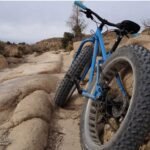Choosing the best outdoor adventure bike involves considering various factors such as terrain, riding style, and personal preferences to ensure optimal performance and enjoyment during your outdoor escapades. Whether you’re exploring rugged trails, commuting through urban environments, or embarking on long-distance bikepacking journeys, selecting the right bike enhances comfort, efficiency, and overall cycling experience.
Understanding Your Cycling Needs and Goals
Before purchasing an outdoor adventure bike, evaluate your cycling goals, intended use, and preferred riding environments. Consider whether you prioritize speed, versatility, comfort, or durability to match your cycling adventures, whether it’s off-road exploration, daily commuting, or extended touring.

Factors to Consider When Choosing an Outdoor Adventure Bike
1. Bike Type and Riding Style
Select a bike type that aligns with your intended riding style and terrain preferences. Mountain bikes are ideal for off-road trails and rugged terrain, offering suspension systems for shock absorption and durable frames for stability. Gravel bikes combine road and mountain bike features, suitable for diverse surfaces including gravel paths and unpaved roads. Hybrid bikes provide versatility for both city commuting and light trail riding, featuring a balance of comfort and performance.
2. Frame Material and Construction
Evaluate frame materials such as aluminum, carbon fiber, steel, and titanium, each offering unique benefits in terms of weight, durability, and ride quality. Aluminum frames are lightweight and affordable, ideal for entry-level riders or budget-conscious cyclists. Carbon fiber frames provide superior strength-to-weight ratio and shock absorption, suitable for competitive cyclists or those seeking optimal performance on varied terrain.
Choosing Components and Features
1. Suspension Systems and Forks
Consider bike suspension systems, including front suspension forks or full-suspension setups for mountain biking adventures. Suspension forks absorb impact from rough terrain, enhancing comfort and control during downhill descents or technical trails. Evaluate suspension travel, adjustability, and maintenance requirements based on your riding preferences and skill level.
2. Braking Systems and Tire Options
Evaluate braking systems such as disc brakes or rim brakes, each offering advantages in terms of stopping power, durability, and performance in wet or muddy conditions. Choose tire options based on terrain versatility, including tread patterns, tire width, and tubeless compatibility for enhanced traction, durability, and puncture resistance during outdoor adventures.
Ergonomics and Comfort Considerations
1. Handlebars and Saddle Selection
Select handlebars that promote ergonomic comfort and control, such as flat handlebars for mountain biking or drop handlebars for long-distance touring and road cycling. Choose a saddle with appropriate width, padding, and support to minimize discomfort during extended rides and ensure optimal riding posture and comfort.
2. Fit and Adjustability
Prioritize bike fit and adjustability to achieve optimal riding position, comfort, and efficiency. Consider frame size, seat height, handlebar reach, and stem length adjustments to accommodate your body proportions and riding preferences. Schedule a professional bike fitting or consult with experienced cyclists to fine-tune bike components for personalized comfort and performance.
Budget Considerations and Value for Money
1. Investment in Quality and Durability
Allocate a budget that reflects your cycling goals, desired features, and long-term investment in bike quality and durability. Compare prices, research bike reviews, and seek recommendations from local bike shops or cycling communities to ensure value for money and reliable performance during outdoor adventures.
2. Warranty and After-Sales Support
Research bike brands offering warranty coverage, after-sales support, and maintenance services to address potential issues, ensure product satisfaction, and prolong bike lifespan. Evaluate customer reviews, manufacturer reputation, and service availability to make informed decisions about bike purchases and ongoing support needs.
Conclusion
Choosing the best outdoor adventure bike involves thorough research, consideration of personal preferences, and alignment with cycling goals to enhance performance, comfort, and enjoyment during outdoor adventures. Whether selecting a mountain bike for off-road trails, gravel bike for versatile terrain, or hybrid bike for urban commuting, prioritize features that optimize ride quality, durability, and suitability for your cycling adventures.











